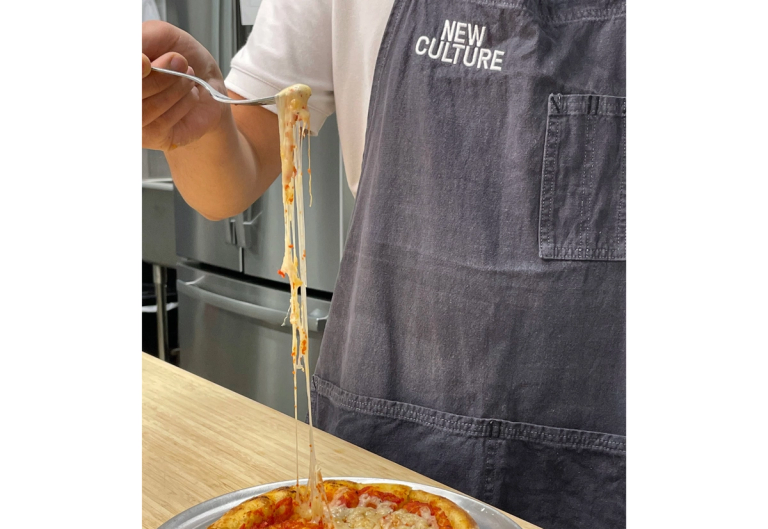
Same Great Mozzarella, Half the Casein
Tuesday, Dec 17, 2024
The New Culture team is thrilled to share some important news. We’ve reached a critical cost milestone by reducing the amount of casein needed to make our mozzarella by 28%. This means we’ve dropped below a key cheese cost threshold and have undercut the casein inclusion rate in conventional mozzarella by more than 50%.
This achievement demonstrates the superior functional properties of our casein protein relative to conventional dairy casein. It also further proves New Culture’s financial viability. With this reduction we’ve hit an essential milestone on our path to achieving cost parity with conventional mozzarella and reaching positive net margins. The following update goes into more detail on the achievement.
--
We say it a lot at New Culture: casein is responsible for everything we love about cheese. The melt, the stretch, the mouthfeel - it’s all because of casein protein. By pioneering the ability to make animal-free casein, we’ve made it possible to make animal-free cheese that finally, actually tastes like conventional cheese.
But simply making incredible animal-free cheese isn’t the goal for the New Culture team. We want to sell a lot (a lot!) of animal-free cheese. And in order to sell a lot of cheese, we have to do it at a pretty low cost. Low enough that pizza lovers feel good about the price that they’re paying for their favorite pizza topped with our animal-free mozzarella.
The importance of needing less animal-free casein
In the cost equation for New Culture animal-free cheese, there’s one input that matters more than all the others. It’s not the water, plant-based fats or salt we include in the cheese. It’s the cost of New Culture animal-free casein that stands out.

So anything that we can do to bring down the cost of our casein in our cheese has a huge impact on what that pizza lover is going to pay for a New Culture pie. Recently we’ve been focused on bringing that cost down by decreasing the amount of our casein we put into our cheese. In other words, less casein but same great mozzarella. Could we drop the casein “inclusion rate” without negatively impacting how our mozzarella tastes and performs? It’s a question we’d been curious to explore for a long time. Turns out we were extremely happy with the answer.
We were able to decrease the amount of casein in our cheese by 28% and still maintain restaurant-quality mozzarella. That drop equates to more than a 50% reduction in the casein inclusion rate for New Culture cheese vs. the conventional mozzarella benchmark. Our casein has such superior functionality that despite needing half as much as conventional mozzarella, New Culture can deliver the same delicious cheese.
How we made it possible
The key was knowing that we’d actually produced a low inclusion rate cheese that was just as delicious as our previous version. So we turned to some rigorous sensory science and analytical methods that included a scoring system with 15 different attributes. That’s right: mozzarella does in fact have (at least) 15 distinct attributes and they are each scorable.
Ask even a novice pizza eater and they’ll attest to the importance of flavor, melt and stretch. But there’s also mouthfeel and “bite resistance” (how bouncy is the chew?) plus “oiling off” and browning (“toast marks” are a fun industry term). Plant-based cheese eaters know how undesirable “mouth coating” is so we assess that as well. And that’s just a subset of what matters for the cooked cheese. Then there’s a series of attributes that we score for raw cheese as well.

As we tested out low inclusion rate formulations, it was imperative that each attribute received a passing score. Even if a formulation led to a beautiful stretch and wonderfully bouncy bite, it wouldn’t pass if it left a sticky residue on a taster’s teeth or looked as dry as the moon.
What made this challenge even more difficult is that often attributes are in tension with one another. Better bite resistance can mean worse melt. Better oiling off might mean worse mouthfeel. So the team had to find the space in between that satisfied all attributes, leading to a well balanced mozzarella that tasted exactly like, well, mozzarella.
The path ahead
We’re incredibly proud of this accomplishment. Undercutting conventional mozzarella’s casein inclusion rate by more than 50% doesn’t just happen accidentally. It’s a milestone in the history of New Culture that couldn’t have been possible without the effort of the entire team.
As for what’s next? We already have plans for how to push the inclusion rate even lower. After all, we want to make a lot of cheese at low enough cost that pizza lovers feel good about the price they’re paying for it. That’s how we’ll truly lead the global transition to an animal-free dairy future.